What’s new in Qlik Cloud March 2022
Scatterplot now supports regression lines
The scatterplot chart now supports regression lines, including average, linear, exponential, and logarithmic, as well as second, third, and fourth polynomial. There are also possibilities to customise the regression line settings including colour and type, vertical or horizontal fit, and display the formula in a tooltip to quickly see the relationship between two variables.
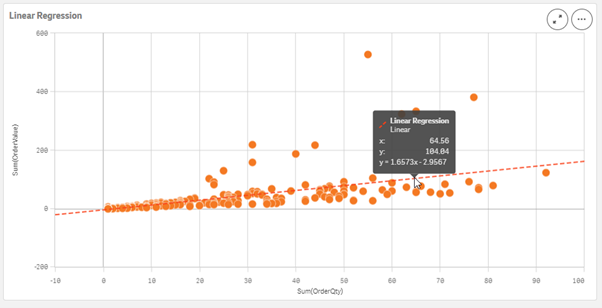
Support for field-level lineage
Lineage capabilities have expanded to not only visually show the data history by table but also by the specific field within a table, starting with applications all the way back to the original source. Field-level lineage helps you establish trust in the data origins. When you explore an app, you can now quickly access a data lineage summary that traces back any dimensions and measures in a chart to its original sources.
There is also now a distinction between Lineage and Impact Analysis.
- Lineage shows you a detailed visual representation of the history of a field or dataset, back to its original source.
- Impact Analysis shows you a downstream view of the dependencies for a data element, including databases, apps, files, or links that will be directly or indirectly impacted if the value of that particular field changes.
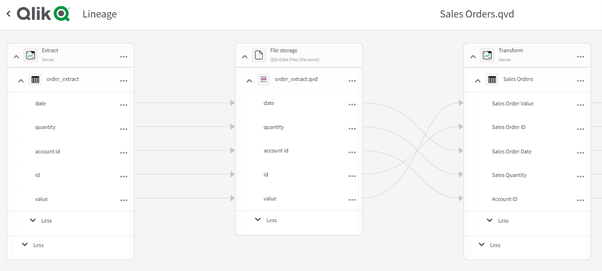
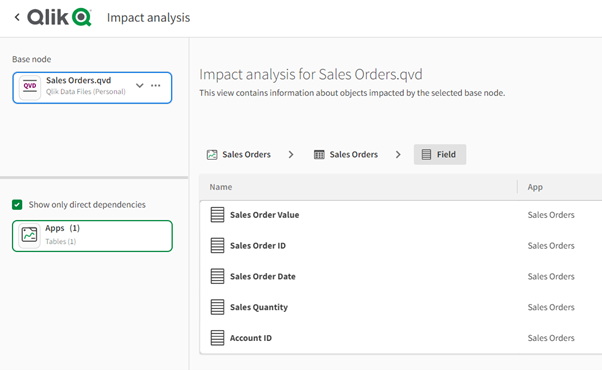
Qlik Application Automation Improvements
New toolbar in Editor view
A new toolbar in the automation canvas Editor view includes Undo and Redo buttons, allowing users to quickly revert or reinstate actions when creating automations.
Webhooks and event filtering enabled for triggering automations
All users can now set the run mode of the start block to the option webhooks. Webhooks trigger automations based on events in Qlik Cloud. In addition, you can apply filters to gain better control over when automations run, for example by triggering on specific apps or apps in specific spaces.
New Okta connector
Qlik Application Automation has a new Okta connector. Okta is a customisable and secure Identity as a Service (IaaS) platform. The Okta connector in Qlik Application Automation allows you to manage your users and groups in an automation.
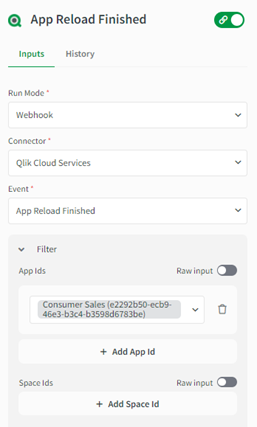
Catalog improvements and new features
A new dataset overview replaces the previous dataset detail view and provides key descriptive and technical metadata about datasets. Information in the overview includes the source file type, space, creation and last modified timestamps, field and row count, creator and owner, usage metrics, applied tags and common data classifications. Catalog now also provides three views of field profile data: Tile (visual field profile), List (fields metadata), or Data (preview of raw dataset).
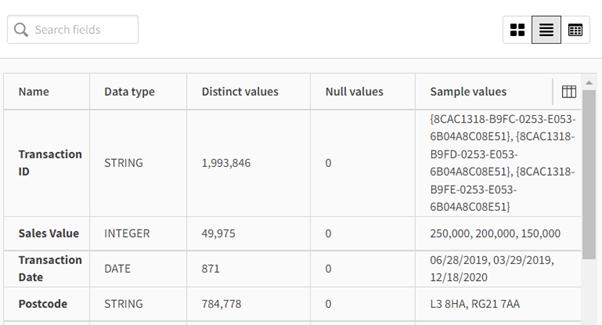
New navigation panel in the Cloud hub
A new left panel has been introduced that simplifies navigation and makes content easier to find. The left navigation panel contains menu items for Home, Catalog, and Collections, as well as Getting Started. Also, the Catalog section includes a new Spaces drop-down list so you can easily navigate and view content in spaces.
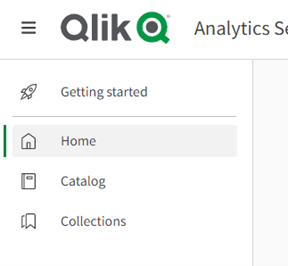
New actions for button object
New actions available with the button object improve the workflow for on-demand apps and dynamic views. App developers can use the button to generate on-demand apps based on current selections in an app or refreshing dynamic views.
Subscription reports support multiple sheets
The self-service reporting of the Subscription feature now allows users to subscribe to multiple sheets (maximum of 10) in an app.
Data Services: Improving data asset management in the Management Console
Tenant and data admins can now monitor scheduled reloads of data assets in the Management Console. This includes stopping and resuming reloads from the Data Content section.
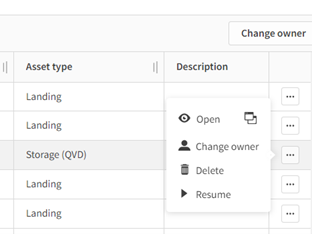
Data Services: Delivering data from cloud data sources
The Hybrid Data Delivery Service has now expanded its functionality to let users load SaaS application data from 20 different cloud sources into the Snowflake data cloud without hand-coding or the need for installing Qlik Replicate. Supported cloud sources include:
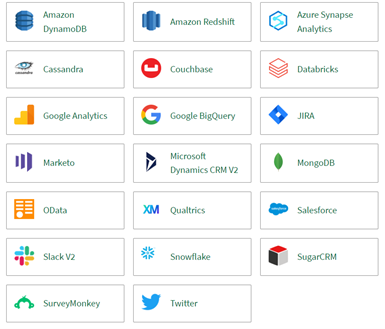
Data Services: Support for Google Cloud BigQuery with Hybrid Data Delivery
The Hybrid Data Delivery Service now supports Google Cloud BigQuery as a target allowing users to replicate data from on-premises systems into Google Cloud BigQuery.
Connector Updates
New Google Ads Connector
The new Qlik Google Ads Connector allows users to access performance data using the Google Ads Query Language. Google will stop supporting the API for Google AdWords on April 27, 2022. If you are using the old Qlik Google AdWords Connector, you will need to create new connections with the Google Ads Connector.
Databricks ODBC Connector has OAuth support and improved interface
The Databricks Connector now supports OAuth 2.0 authentication with Databricks on Azure. The support for OAuth also allows single sign-on (SSO) to Databricks when using an identity provider. The Databricks connection interface has been simplified to include the database properties that apply only to this connector.
Oracle Connector support for uploading Oracle Wallets
The Qlik Oracle Connector now provides additional security capabilities with support for uploading an Oracle Wallet file. Oracle Wallets are containers that store authentication credentials, private keys, certificates, and more. This allows organisations to enforce security rules based on defined user privileges contained in an Oracle Wallet. The Qlik Oracle Connector can now access Oracle Wallets through a TLS-encrypted communication channel.
Insight Advisor Chat improvements
- Insight Advisor Chat now includes support for period-over-period analysis, allowing users to ask natural language questions to compare current performance to prior periods and get the results through conversational analytics.
- Insight Advisor Chat now supports apps using section access. This makes conversational analytics available to those who use section access in apps for data governance.
Uploading apps with GeoAnalytics extensions
Users can now upload apps from other versions of Qlik Sense that use GeoAnalytics extensions. The extension will continue to function until March 2023, giving app developers time to modify apps to use the improved Map Chart feature in Qlik Sense SaaS instead.
Qlik Sense Mobile: View visualisations as tables
Qlik Sense Mobile users can now convert visualisations to tables directly on the device, allowing for better visibility and usability when you’re on-the-go. Tables include infinite scrolling, resizable columns, sorting, full screen mode, and the ability to make selections directly in tables. Tables are optimised for performance for fast rendering on mobile devices.
Reflection of Qlik Cloud March 2022 release
Overall, we have seen a month full of enhancements spread across multiple areas, which makes it difficult to summarise. From new additions in Automations, Lineage Analysis and Data Services, to enhancements in visualisations, connectivity and the Insight Advisor Chat, this month has been packed with news.
One of the new features to highlight is something I know many users, including myself, have been waiting for: adding regression lines in the scatterplot. This is a much-welcomed addition to the scatterplot which eliminates the need of using third-party extensions to accomplish this type of analysis.
Another new feature to praise is the expansion of the data lineage analytics. Support for field-level lineage and impact analysis takes the data analysis and data governance to a more granular level. Qlik mentions the new enhancements as a part of the concept “Explainable BI”. Explainable BI is the idea that users will gain more confidence in using data and making decisions based on it, if they have a good understanding, or explanation, of the information’s origin.
Furthermore, the ability for all users to use event-driven webhooks to trigger automation runs is going to make task workflows even more automated.
Last but not least, we have seen a number of improvements made to the data connectivity in Qlik, including the ability to land data from a multitude of cloud data sources using Qlik Data Services.
Topic: Data analytics



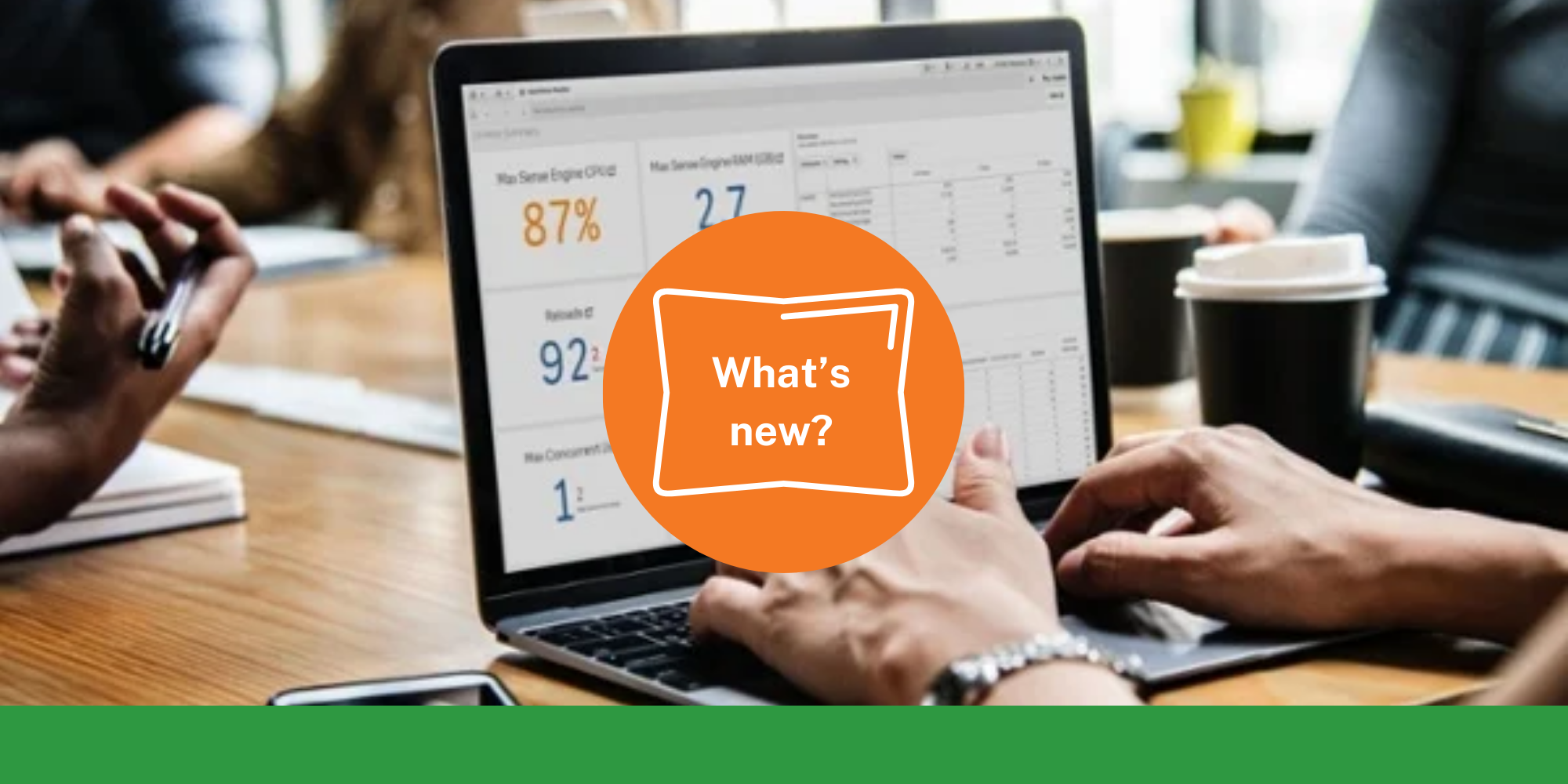

Comments